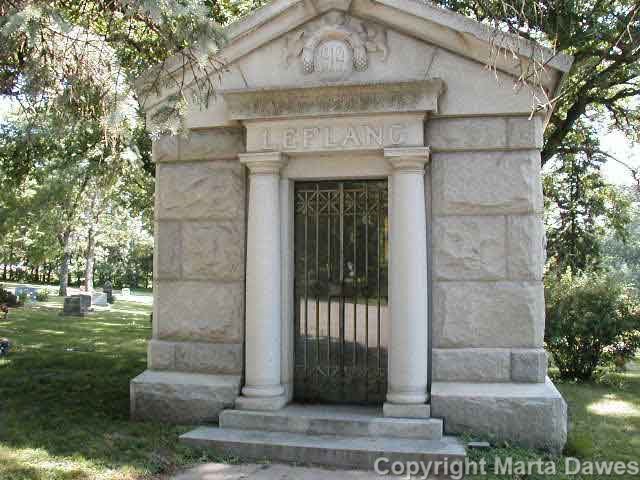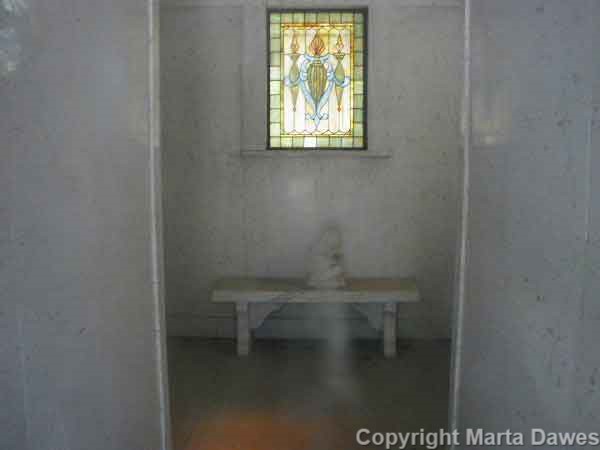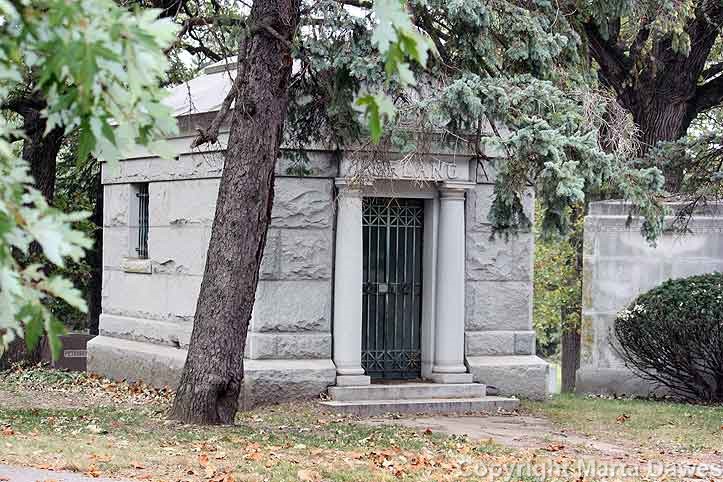

To navigate the Forest Lawn pages, use the menu dropdown at the top of each page
For the longest time the occupants or history of the Leflang mausoleum were a complete mystery, since you can see no birth or death dates, and no other names. I did not know anything about the family and had never heard of them.
I can now say with certainty that this is the mausoleum of Emile M. F. Leflang and his family. Mr. Leflang was a banker, and was the President of the Dawson County National Bank in Lexington, Nebraska in the early part of this century.
I received the following very welcome email from Maribelle Leflang, and I thank her for taking the time to write. Her husband is the great-grandson of E. M. F. Leflang.
"He (E. M. F. Leflang) was my husband's great-grandfather. Emile was born in Denmark and emigrated to this country when he was about 14 years old [1864], as far as we can determine. His father had arrived in the U.S. about two years earlier. Emil[e] was working at Field's department store in Chicago at the time of the Great Fire. In the early 1870's he moved to Plum Creek, Nebraska, now Lexington, where his father and mother were living. He amassed a fortune there before he moved to Omaha in the early years of the 20th Century.
There was a Leflang Building in Omaha built in the early years of the 20th C. and razed about 1966. He had been a banker and owner of the local flour mill in Lexington. In Omaha, real estate may have been his principal business. His first wife is buried in the mausoleum, having died 22 Febr. 1912. Emile d. 1 May 1929. Probably his second wife, Anna Cole, is buried there, too.
The family is Dutch in origin and the name Leeflang, in its earliest form, means "long life." Through currently available records, my husband and I have been able to trace the Leflang/Leeflang family to about mid-16th C. in Holland."
In March 2013 Micah emailed me about a correction to the location of the LeFlang Building; my thanks to Micah!
"On the Emile Leflang page, the relative who wrote you confused the Leflang building with the Post Office. The Post Office was built in 1892 or 1896 in the Richardsonian Romanesque style and razed in 1966. The Doubletree Hotel and (the old) First National Bank building sit on that site today (between Dodge and Capitol on 16th Street).
The Leflang building was originally Freemason’s Hall, built in 1876 and enlarged in 1885. The Masons built a new building at 19th and Douglas in 1916-17, and sold Freemason’s Hall to Emile Leflang in 1919 for $198,000. It became the Leflang building and burned down in November, 1947. The US Government subsequently bought the lot, which is why the Zorinsky Federal Building is on that site today." The mausoleum is very gothic, surrounded as it is by evergreens and gloom.


The mausoleum is marvelously gothic, surrounded as it is with drooping evergreens and gloom.
